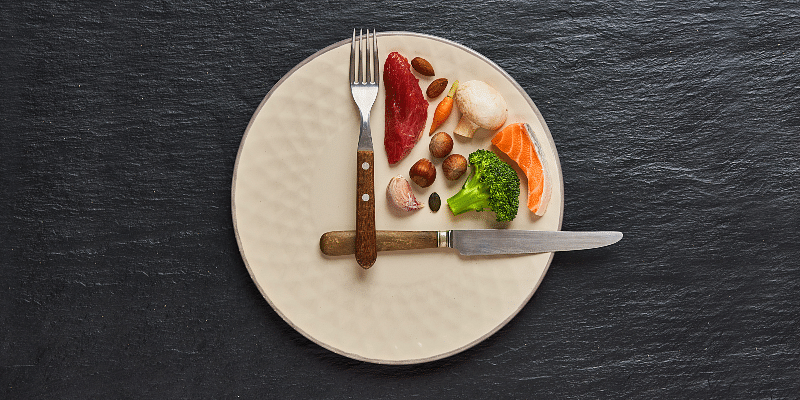
Do you want to manage your weight without sacrificing the irresistible flavours of Indian cuisine? If so, you are at the right place. Be prepared for a diet plan that promises no compromise on taste to achieve your health goals.
It might sound too good to be true. However, with the right balance and smart planning, it’s entirely possible. In today’s article, we will explore a practical Indian diet chart for weight management that emphasise on balanced nutrition and mindful eating.
Begin with a healthy breakfast
There is a saying “Breakfast is the most important meal of the day”, this is even more true when it comes to weight management. The concept of a wholesome breakfast isn’t new to Indian culture.
A wholesome breakfast not only provides the required energy to start the day but also keeps your metabolism active throughout. Here are a few delicious yet healthy breakfast ideas to consider.
Poha:
Flattened rice cooked with spices, vegetables, and a dash of lime juice.
Oats:
Oats cooked with milk or water, topped with fresh fruits and nuts.
Idli or Dosa:
Steamed rice cakes or rice crepes made from fermented batter, served with coconut chutney and sambhar (a lentil-based vegetable stew).
Upma:
A savory semolina porridge cooked with vegetables and tempered with spices.
Paratha:
Whole wheat flatbread stuffed with vegetables or paneer (cottage cheese) and served with yogurt or pickle in moderation.
Plan balanced meals
Balancing macronutrients like carbohydrates, proteins, and fats in your meals is key to weight management. An ideal Indian diet for weight management should definitely include these.
Let’s find out some of the easily available sources you can choose to get these nutrients from in India:
Carbohydrates:
Opt for whole grains like brown rice, quinoa, and whole wheat roti (chapati) instead of refined grains.
Proteins:
Include sources like lean poultry, fish, legumes, tofu, and low-fat dairy products.
Fats:
Incorporate healthy fats from sources like nuts, seeds, avocado, and olive oil.
Make sure that each meal of yours contains these in a balance, along with plenty of colorful vegetables in order to get the essential vitamins and minerals.
Embrace healthy snacking
Unhealthy snacking can be disastrous when it comes to weight management. Chose healthier alternatives such as:
Fruit chaat:
A mix of fresh fruits with a sprinkle of chaat masala.
Yogurt:
A bowl of low-fat yogurt with a drizzle of honey and some nuts.
Roasted chickpeas:
A crunchy and satisfying snack high in protein and fiber.
Vegetable sticks with hummus:
A nutritious and filling option for when you’re feeling peckish.
A light dinner
A light dinner diet is an excellent choice for those looking to manage weight. It ensures a good night’s sleep, and prevents indigestion, promoting a sense of well-being.
Some meal ideas for a light dinner include grilled chicken or fish with steamed vegetables, a hearty salad with lean protein such as grilled tofu or chickpeas, vegetable soup, or a comforting bowl of oats. Make sure you keep the portion small.
Other factors
Remember that a balanced diet is just a part of the whole puzzle. There are multiple other deciding factors that play a great role in your weight management. Let’s have a look at them.
Hydrate wisely
Staying hydrated is not crucial for weight management. In many cases, thirst is mistaken as hunger. Also drinking a glass of water before meals helps you control your appetite too.
Mindful eating
It takes around 20 minutes for your brain to send a signal that you’re full. Hence, incorporating the practice of mindful eating i.e. paying attention to the flavors, textures, and aromas of your food, will ensure enough time to receive the cue.
Stay active
Without regular physical activity weight management is next to impossible. Incorporate exercise into your daily routine, whether it’s walking, jogging, yoga, or any other activity you enjoy.
Conclusion
Achieving your desired weight without missing out on the diverse flavors of Indian cuisine is entirely possible. All you need to do is take certain aspects into consideration like nutrient-dense foods, portion control, mindful eating, and regular physical activity.
Hence, following a practical Indian diet chart that takes these principles into consideration, will surely yield the expected results. Remember, Deprivation is never an option, smart and sustainable choices make all the difference.










